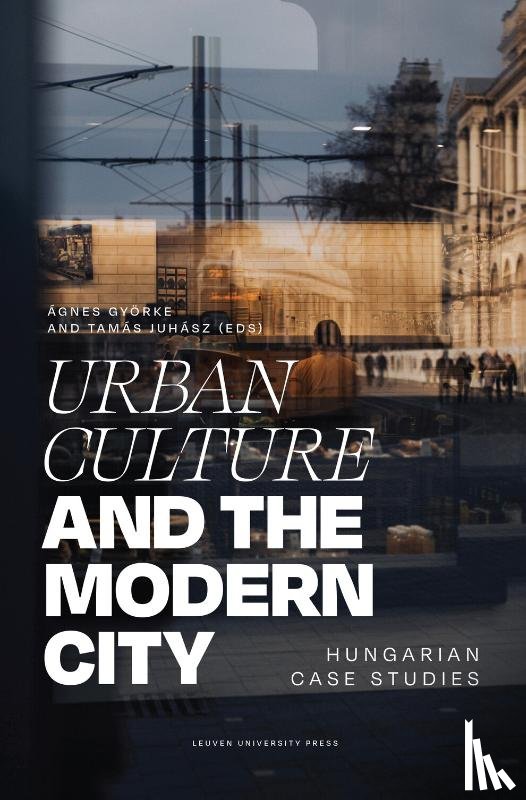Omschrijving
Hungarian urban culture in the 20th and the 21st centuries. When consulting key works on urban studies, the absence of Central and Eastern European towns is striking. Cities such as Vienna, Budapest, Prague, and Trieste, where such notable figures as Freud, Ferenczi, Kafka, and Joyce lived and worked, are rarely studied in a translocal framework, as if Central and Eastern Europe were still a blind spot of European modernity. This volume expands the scope of literary urban studies by focusing on Budapest and Hungarian small towns, offering in-depth analyses of the intriguing link between literature, the arts, and material culture in the 20th and 21st centuries. The case studies situate Hungarian urban culture within the global flow of ideas as they explore the period of modernism, the mid-century, and the post-1989 era in a context that moves well beyond the borders of the country. When consulting key works on urban studies, the absence of Central and Eastern European towns is striking. Cities such as Vienna, Budapest, Prague, and Trieste, where such notable figures as Freud, Ferenczi, Kafka, and Joyce lived and worked, are rarely studied in a translocal framework, as if Central and Eastern Europe were still a blind spot of European modernity. This volume expands the scope of literary urban studies by focusing on Budapest and Hungarian small towns, offering in-depth analyses of the intriguing link between literature, the arts, and material culture in the 20th and 21st centuries. The case studies situate Hungarian urban culture within the global flow of ideas as they explore the period of modernism, the mid-century, and the post-1989 era in a context that moves well beyond the borders of the country. Acknowledgements
Introduction. The Modern City in Hungarian Culture: Translocal Interventions
Ágnes Györke and Tamás Juhász
PART I THE EARLY TWENTIETH CENTURY: LITERATURE, PAINTING AND THE CITY
Chapter 1. ‘You’ll Never Walk Alone’: Ferenc Molnár’s Budapest in Liliom and The Guardsman
Márta Pellérdi
Chapter 2. City in the Land: Nationalism, Technology and Celebrity Culture in Gyula Krúdy’s Primadonna
Tamás Juhász
Chapter 3. Small-town Poetics: The Provincial Small Town as the Counterpoint of Metropolis in Dezső Kosztolányi’s Skylark
Ágnes Klára Papp
Chapter 4. ‘Métèques’ and the Central Powers of ‘Montparnasse’: Emil Szittya and the École de Paris
Magdolna Gucsa
PART II PERSPECTIVES ON THE MID-CENTURY: PUBLIC ART AND THE NOVEL
Chapter 5. Place, Space, Gender and Narrative Agency in Margit Kaffka’s Colours and Years (1911, 1912) and Magda Szabó’s The Fawn (1959)
Éva Federmayer
Chapter 6. Told and Untold Histories of Oppression: Hungarian Romani Composer János Bihari’s Memory Sites in Budapest under State Socialism
Árpád Bak
Chapter 7. Small-town Civility and the Concept of Liberty in Géza Ottlik’s Opus Magnum
Ferenc Hörcher
PART III REFLECTIONS ON THE CONTEMPORARY CITY: MATERIAL, LITERARY, AND VISUAL CULTURES
Chapter 8. Surface Matters: An Archaeology of the Arrow Cross in Budapest’s Façades
László Munteán
Chapter 9. Budapest in Noémi Szécsi’s The Finno-Ugrian Vampire: The Grand and the Peripheral
Ágnes Györke
Chapter 10. Three Postcards of Budapest: Paradigms of the Urban Imaginary in Post-communist Hungarian Cinema
György Kalmár
Chapter 11. Old City: Ageist Crime and Transgenerational Care in Kristóf Deák’s The Grandson (2022)
Eszter Ureczky
Notes on Contributors
Index


